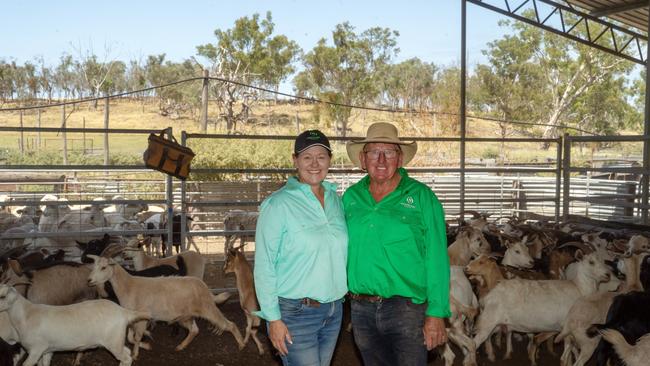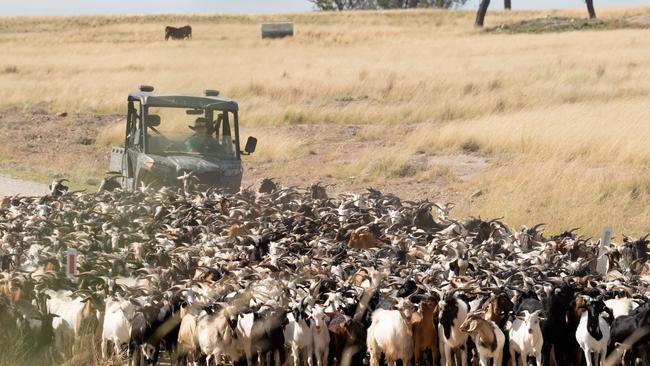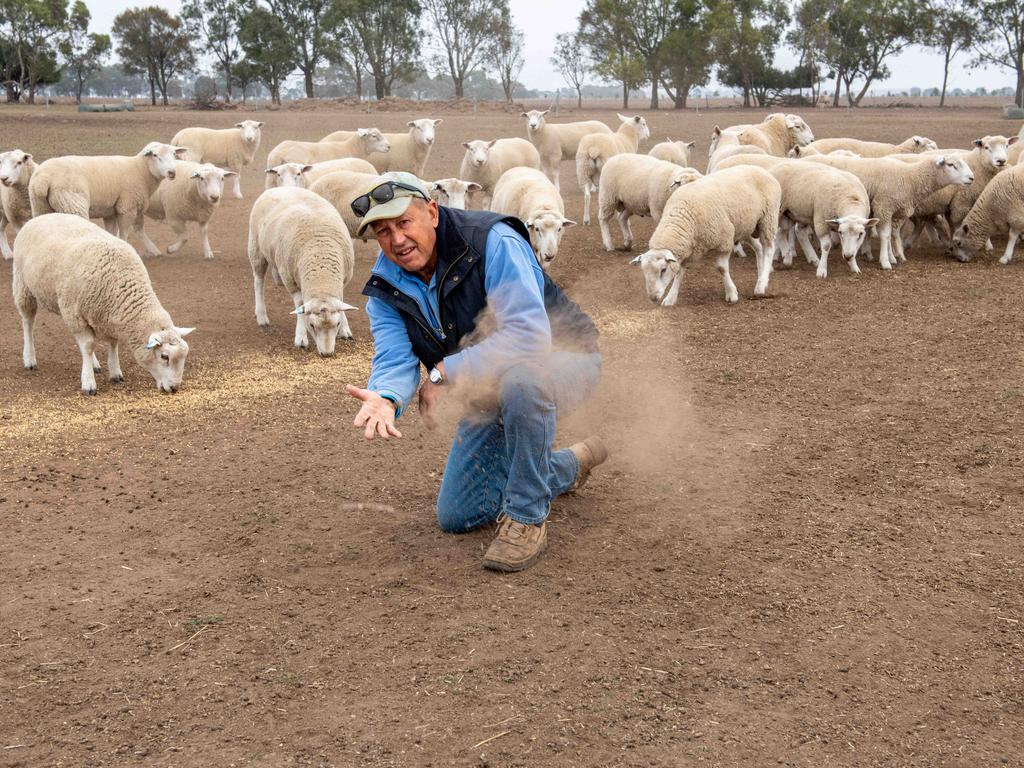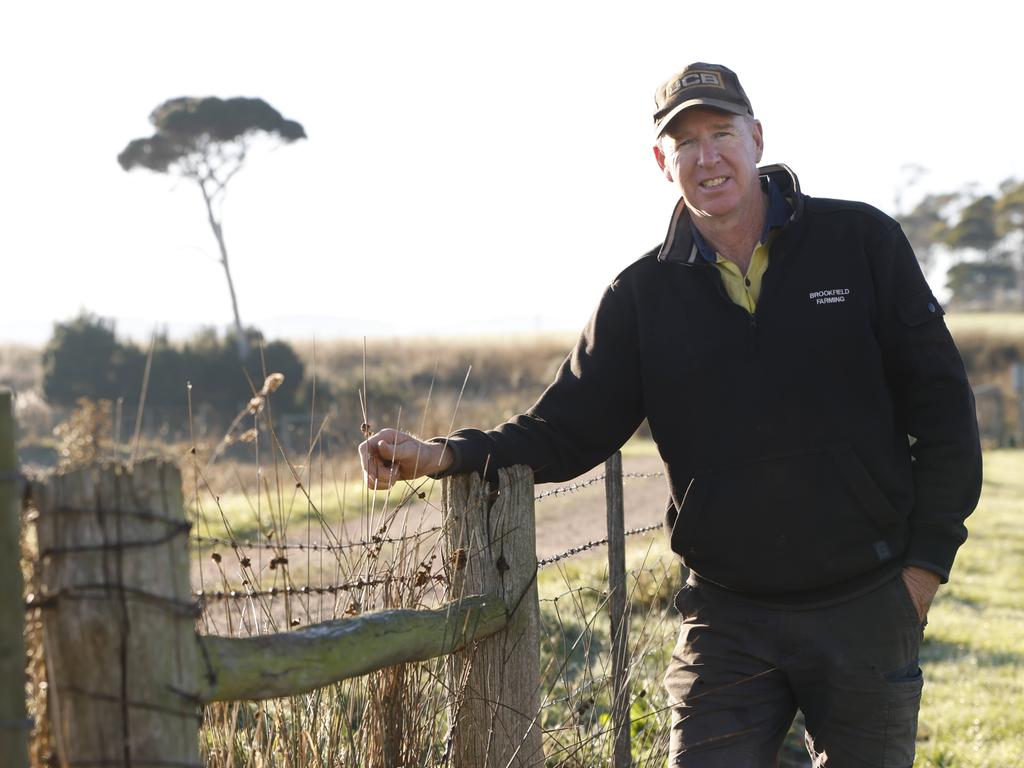Riding the goat tales of a homegrown culinary and cultural revolution
Australia was famously raised on the sheep’s back and loves a well cooked steak, but there’s a new Aussie-grown meat creating a sensation locally – and overseas.
Australia was famously built on the sheep’s back and its citizens are known for slapping a steak on the barbie, but increasingly its consumers and farmers are “going goat”.
An extraordinary boom in goat meat is under way, driven mainly by insatiable export demand but also by changing local tastes, driven by Asian and African immigration and more adventurous palates.
New data reveals goat meat production has increased 248 per cent in Australia since 2020, driven by favourable weather in key production areas, rapid flock growth and new abattoir capacity.
Remarkably, Australia is now the world’s largest goat meat exporter, with a 55 per cent global market share, well ahead of traditional producers such as Kenya, Ethiopia and Spain.
Exports rose about 50 per cent from 2023 to 2024 to record levels, as did their value – to $354m.
The trend appears unstoppable, with a record 54,017 tonnes produced in 2024 – a 47 per cent increase on 2023, according to the Meat and Livestock Australia data.

Most of the goats are wild-harvested, but increasingly farmers – such as Queensland’s Brian and Keeleigh Allport – are turning to goats as a lucrative alternative to sheep and cows.
“Traditionally, we’re beef producers – we call ourselves accidental goat farmers,” Keeleigh explains.
“We had some less productive country, so made the decision to put some goats in there to clean it up.”
The initial 1200 goats, purchased seven years ago, not only did a great job, but opened the Allports’ eyes to a new way of farming, just as a big dry struck the region.
“When the drought hit we sold our cows because we kept running out of feed, and we kept buying more goats and breeding goats,” Keeleigh says.
The couple now farm 20,000 goats – as well as sheep and cattle – across 23,000 acres (9308ha) of traditional merino wool country in the Southern Downs, west of Warwick.
They find the combination of species extracts maximum bang for buck out of their land. “They’ve all got different grazing requirements – so that utilises the best of our pastures,” Brian explains.
“They graze at different heights, and goats eat a lot of shrubs and vegetation that cattle just walk past. So we are utilising our country to maximum ability.”
This diversification helps insure the family business against fluctuations in prices for any one species, while goats – naturally adapted to drier conditions – are far more resilient to drought.

This year has seen a 30 per cent “jump in production” for the Allports’ Grassland Goats, currently aimed solely at the domestic market, which overall sustains less than 10 per cent of Australia’s total goat production.
“The domestic goat market is growing with the increase in ethnic communities and migrants coming to Australia,” Keeleigh says.
“The other side to the growth is adventurous mainstream consumers who’ve seen a cooking show or travelled overseas and had a good experience eating goat.
“People now realise that whereas when they had goat as a kid it was a tough old gumboot, now they can afford to go to restaurant and eat a great goat curry.”
While much of the export market is based on harvest of wild goats, the Allports say farmed goat is a higher-quality, more tender product, with more meat on the bone, partly due to superior genetics and diet.
Consumers are embracing the “health benefits” of goat. “It’s high protein, low fat, low cholesterol, and has plenty of minerals,” Keeleigh says.
Brian runs the farming operations and Keeleigh the processing and sales side of the business. “We are third- and fourth-generation farmers and it was a big thing for us to take on the retail side,” Brian says.
“But if you’re determined to have a financial hold in agriculture you have to diversify and look outside the box. That’s what we did and it’s probably the best decision we’ve ever made.”
Australia’s main export markets for goat are the United States, South Korea, China and the Caribbean. Despite recent US tariffs, the strength of demand is such that the MLA does not expect any impact on volumes.






To join the conversation, please log in. Don't have an account? Register
Join the conversation, you are commenting as Logout